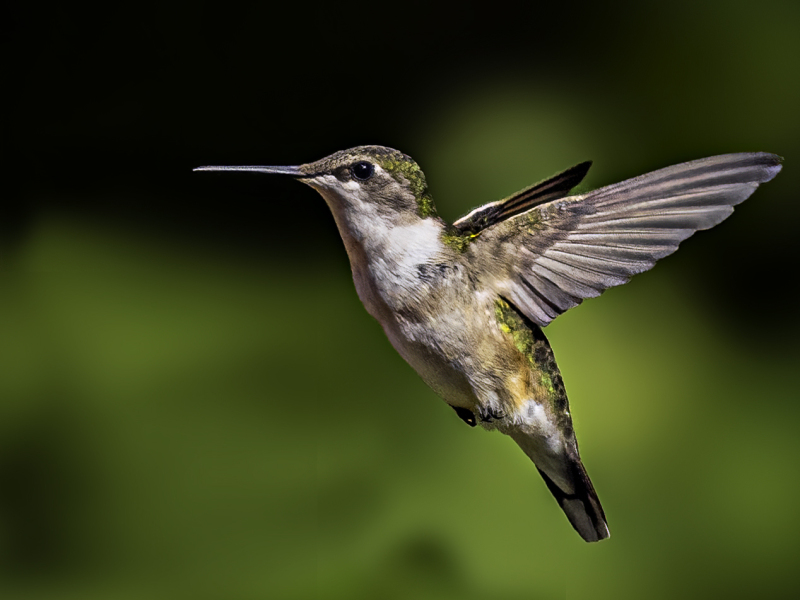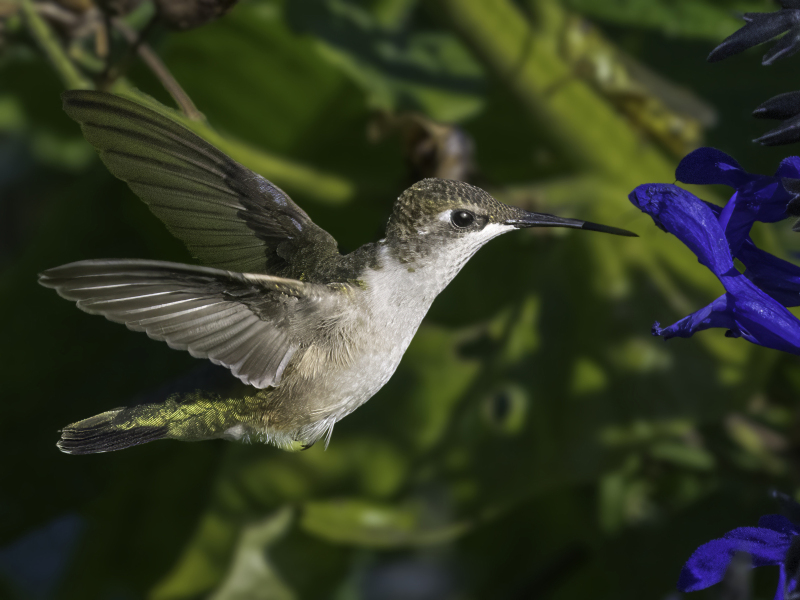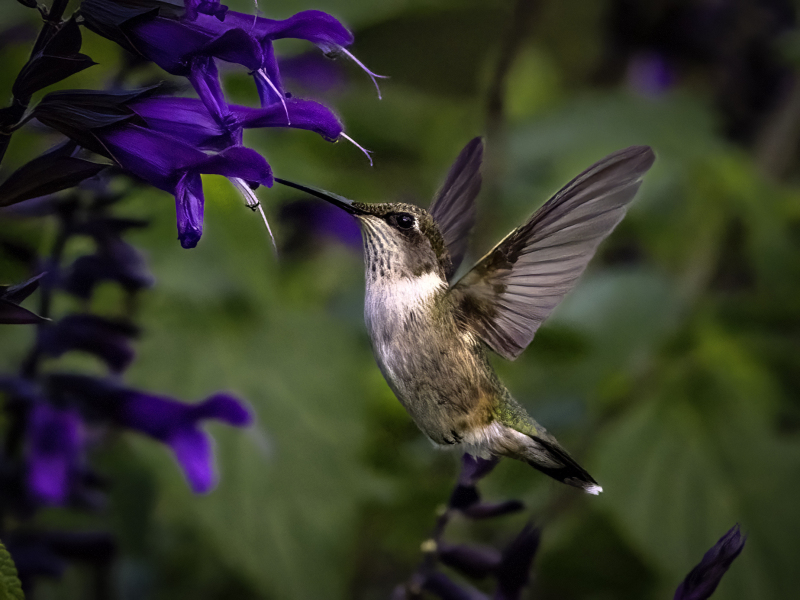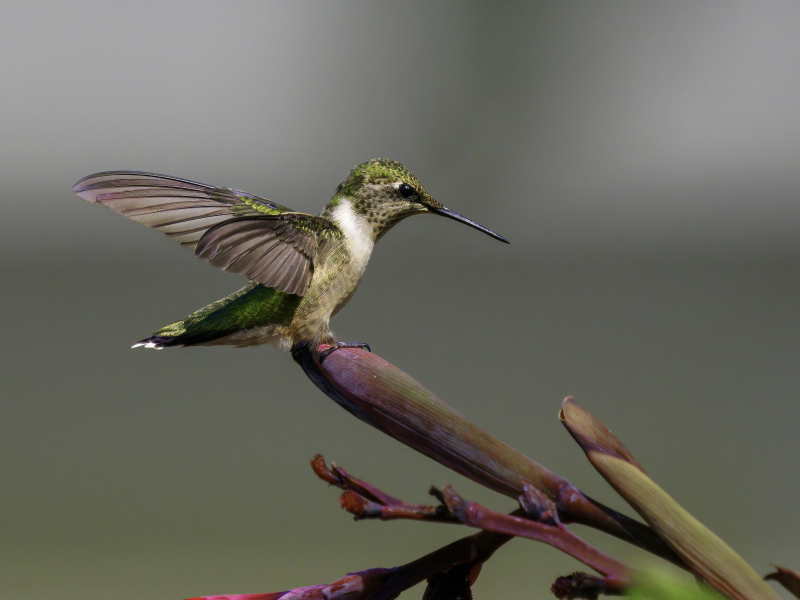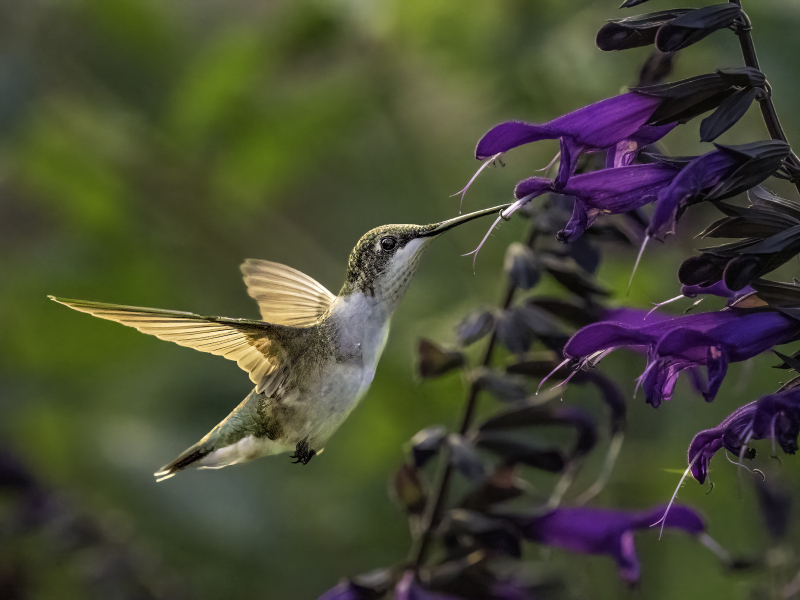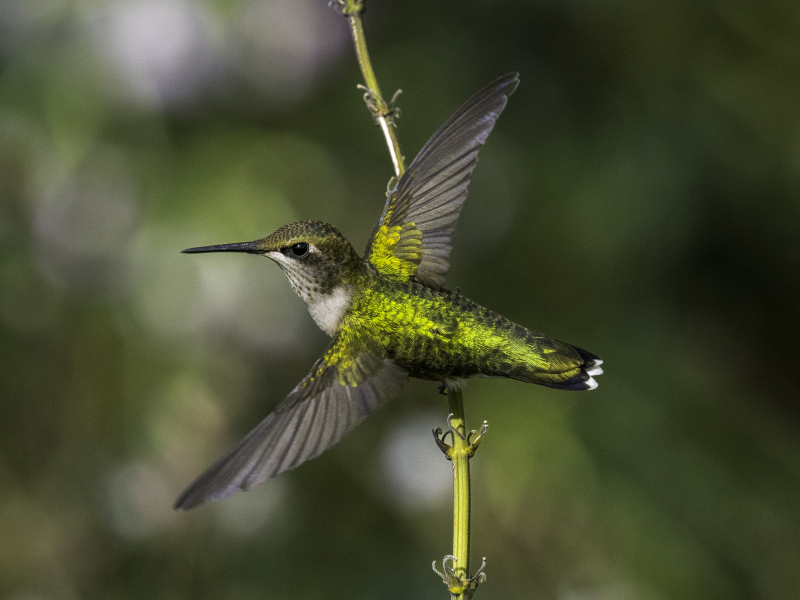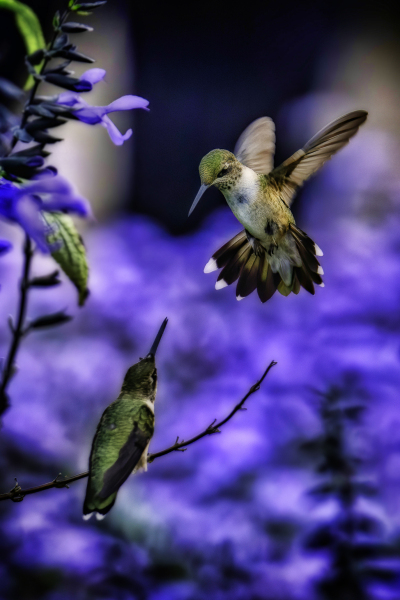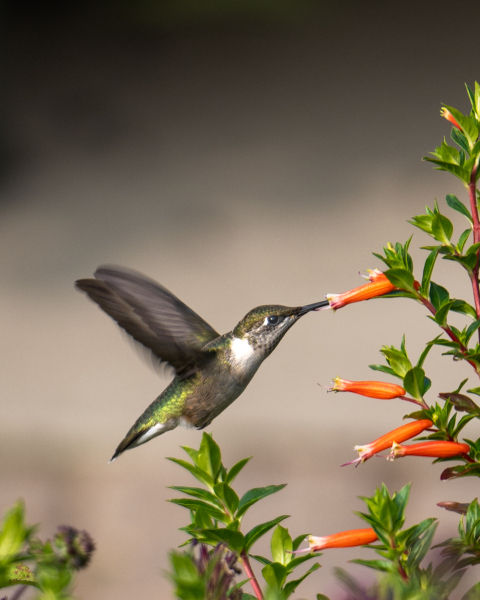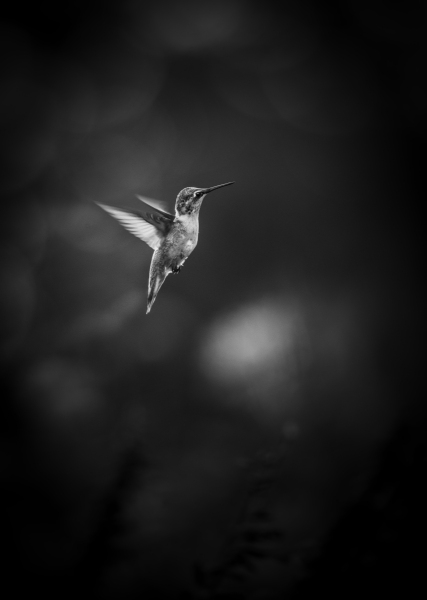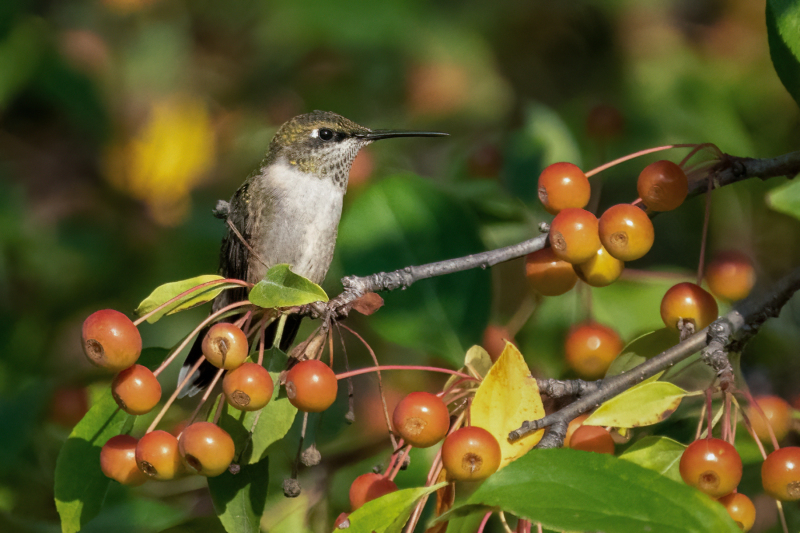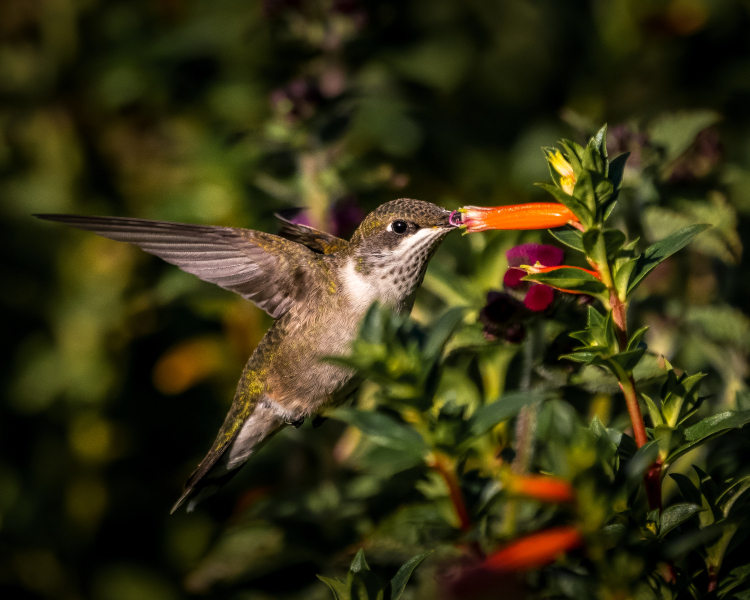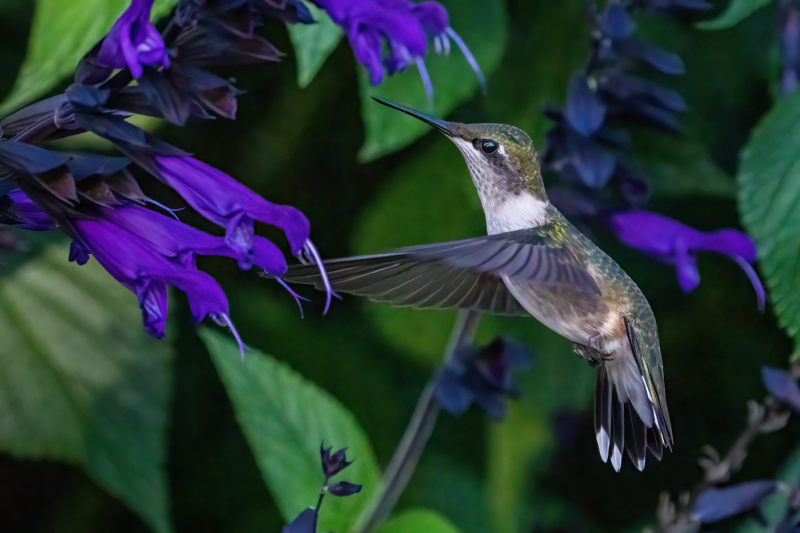The female ruby-throated hummingbird (Archilochus colubris) is a remarkable creature, known for its delicate beauty and impressive abilities. Although it may not possess the dazzling iridescent throat of the male, the female is equally fascinating in her own right, embodying resilience and adaptability.
Measuring about 3 to 4 inches in length, female ruby-throated hummingbirds are slightly smaller than their male counterparts. Their plumage is primarily a muted green above and a white or light gray underneath, providing excellent camouflage among leaves and flowers. This subtle coloration is advantageous, especially during nesting season, when they must avoid predators while tending to their young.
These birds are solitary by nature, often found flitting from flower to flower in search of nectar. They play a crucial role in pollination, transferring pollen as they feed. Their long, slender bills and specialized tongues allow them to reach deep into tubular flowers, making them essential contributors to the health of various plant species. Favorite nectar sources include trumpet vine, bee balm, and columbine, all of which provide the energy needed for their high metabolism.
Female ruby-throated hummingbirds are known for their impressive flying skills. They are capable of hovering in place, flying backward, and even diving at speeds of up to 60 miles per hour during courtship displays. This aerial agility is essential not only for foraging but also for evading predators. Their primary threats include larger birds, such as hawks, and various mammals that might pose a danger to their nests.
Nesting begins in late spring, and it is the female who takes on the responsibility of building the nest, laying eggs, and raising the chicks. She typically selects a location near a reliable food source, such as a flowering plant. The nest, often constructed from plant materials, spider silk, and feathers, is a small cup that measures just a few inches across. After laying two tiny, white eggs, she incubates them for about two weeks. The female is fiercely protective, defending her nest from potential threats.
Once the eggs hatch, the female continues to care for her young, feeding them a mixture of nectar and small insects to provide the necessary protein for growth. The chicks grow rapidly, and after about three weeks, they fledge and leave the nest, although they may still rely on their mother for food for a short period. This intense period of motherhood showcases the female’s dedication and nurturing instincts.
As summer progresses, ruby-throated hummingbirds begin their migration southward to avoid the harsh winter months. The journey can be perilous, covering hundreds of miles, often requiring the birds to cross the Gulf of Mexico in a single flight. This migration is a testament to their endurance and navigational skills, guided by innate instincts and environmental cues.
On this page, you will find photos of female or juvenile male ruby throated hummingbirds as they migrate through Minnesota on the way to warmer weather.
